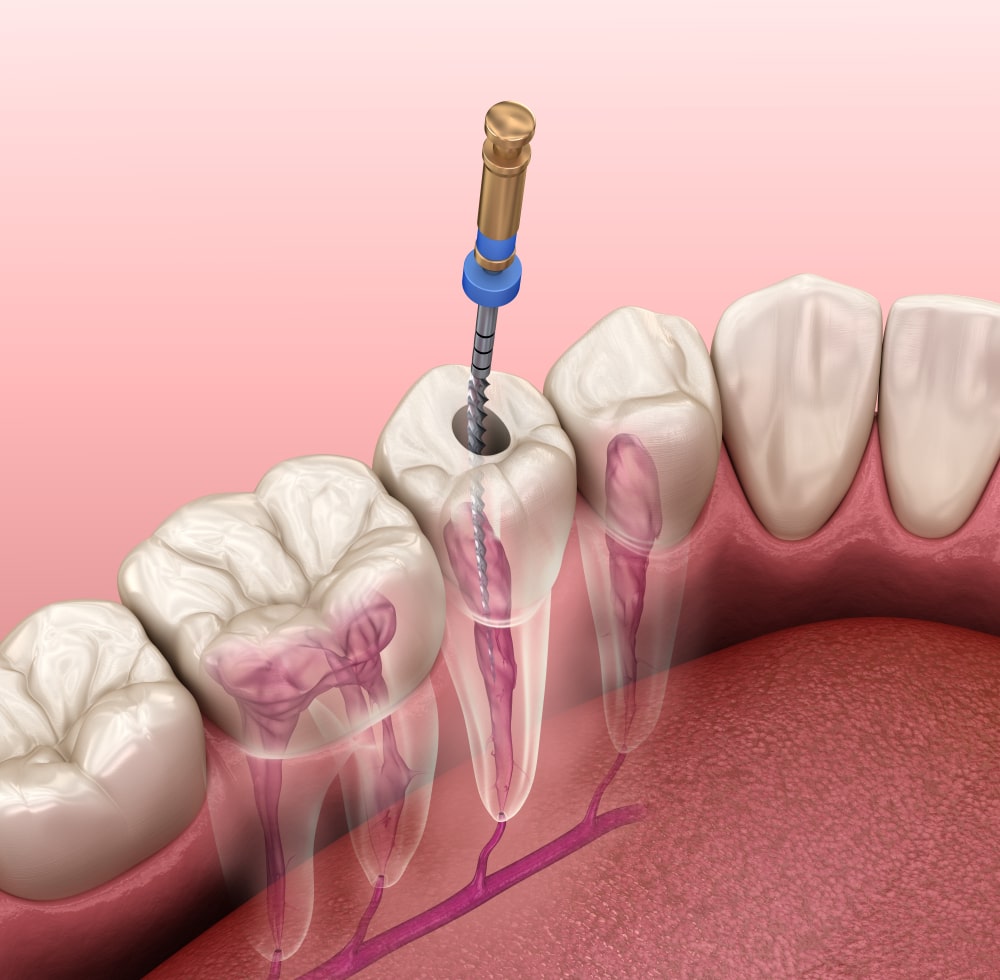Tooth pain can be a sign of serious dental issues, and one of the most effective treatments for severe tooth decay or infection is a root canal treatment. This procedure is often misunderstood, but it is a vital dental solution that can save your natural teeth and alleviate pain. In this guide, we will explore what a root canal treatment involves, its benefits, and what to expect during and after the procedure.
What is Root Canal Treatment?
Root canal treatment, also known as endodontic therapy, is a dental procedure designed to treat infection or damage within the tooth’s pulp—the innermost part of the tooth that contains nerves, blood vessels, and connective tissue. When this area becomes infected due to deep decay, cracks, or trauma, it can lead to severe pain and potentially result in tooth loss if left untreated.
Signs You May Need a Root Canal
Recognizing the symptoms of pulp infection or damage is crucial. Common signs include:
- Persistent toothache or pain that worsens with pressure or chewing
- Sensitivity to hot and cold temperatures, even after the source is removed
- Swelling and tenderness in the gums near the affected tooth
- Darkening or discoloration of the tooth
- Pimple-like bumps on the gums indicating abscess formation
If you experience any of these symptoms, consult a dentist promptly to determine if a root canal treatment is necessary.
The Root Canal Procedure Explained
Understanding the root canal procedure can ease anxiety and help you prepare. Here’s a step-by-step breakdown:
- Diagnosis and Preparation: Your dentist will take X-rays to assess the extent of the damage. Local anesthesia is administered to numb the area, ensuring a pain-free procedure.
- Accessing the Pulp: The dentist creates an opening in the crown of the tooth to access the infected pulp.
- Cleaning and Shaping: The diseased pulp is carefully removed, and the inner chamber is cleaned and disinfected. The canals are then shaped to prepare for filling.
- Filling the Canals: The cleaned canals are filled with a biocompatible material called gutta-percha, which seals the space and prevents future infection.
- Restoration: The tooth is sealed with a temporary filling. In a follow-up visit, the tooth is typically restored with a crown to provide strength and protection.
Benefits of Root Canal Treatment
Root canal treatment offers several significant advantages:
- Pain Relief: The procedure eliminates the source of pain, providing immediate relief.
- Preserves Natural Teeth: Saving your natural tooth maintains your bite and jawbone integrity.
- Prevents Further Infection: Cleaning and sealing the tooth prevent bacteria from spreading.
- Enhances Oral Health: Treating infections promptly improves overall oral health.
Recovery and Aftercare
Recovery from a root canal treatment is generally smooth. You might experience mild discomfort for a few days, which can be managed with over-the-counter pain relievers. To ensure proper healing:
- Avoid chewing on the treated tooth until it’s fully restored.
- Maintain good oral hygiene by brushing and flossing regularly.
- Attend all follow-up appointments for the permanent restoration.
- Contact your dentist if you experience severe pain or swelling.
Common Myths About Root Canal Treatment
Many misconceptions surround root canal therapy. Let’s debunk a few:
- Myth: Root canals are extremely painful.
Fact: Modern techniques and anesthesia make the procedure as comfortable as getting a filling. - Myth: Extraction is a better alternative.
Fact: Saving your natural tooth is more beneficial for long-term oral health than extraction and replacement. - Myth: Root canal-treated teeth don’t last long.
Fact: With proper care, a treated tooth can last a lifetime.
When to See a Dentist
Early diagnosis is key to successful treatment. If you experience persistent tooth pain, sensitivity, or swelling, seek dental care immediately. Regular dental check-ups can also detect issues before they escalate.
Conclusion
Root canal treatment is a highly effective procedure that can save your natural tooth and relieve pain caused by infection or damage. The treatment involves removing the infected pulp, cleaning, and sealing the tooth. By understanding the process and dispelling common myths, such as it being extremely painful, you can approach this treatment with confidence. Modern techniques often make it no more uncomfortable than a filling. Always consult with your dentist to determine the best course of action for your dental health.
Taking timely action can preserve your smile and protect your overall well-being.


